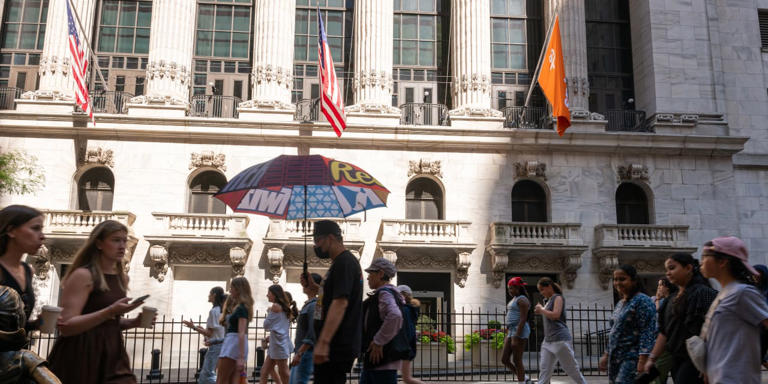BofA Global Research is suggesting that the recent rally in the U.S. stock market may be due for a significant downshift in the coming months. According to their analysis, historical and seasonal trends indicate that the S&P 500 might face increased risks. Since 1936, the large-cap S&P 500 index has typically experienced declines of 5% or more about three times per year and has endured at least one 10% correction annually. This pattern suggests that a pullback is likely overdue.
Recent fluctuations in megacap technology stocks have contributed to the S&P 500 and the Nasdaq Composite being on track for their worst month since April. The term “rotation trade” describes the ongoing shift from high-growth technology stocks to other sectors, which has significantly impacted market performance. If historical trends hold, the turbulence in U.S. equities may continue into August and September, a period traditionally marked by weaker S&P 500 returns.
Compounding these concerns is the upcoming U.S. presidential election, which historically has led to increased market volatility. Since 1928, the Cboe Volatility Index (VIX)—often referred to as Wall Street’s “fear gauge”—has jumped by an average of 25% from July to November during election years. This indicates a potentially volatile environment for the stock market. The VIX has already surged 32% in July, marking its largest monthly increase in over two years, which further underscores the heightened market anxiety.
Despite these risks, BofA strategists, including Subramanian, believe that a full-blown bear market is not anticipated this year. They highlight that macroeconomic indicators typically seen before significant S&P 500 peaks are only partially present at the moment. This suggests that while the market is showing signs of stress, it is not yet at the level typically associated with a bear market. BofA’s sell-side indicator, a contrarian gauge of market sentiment, has shifted to “neutral,” reflecting a change from the deeply negative sentiment observed in 2023. This shift indicates that the previously bearish outlook on Wall Street has moderated.
Recent earnings reports have added to the market’s volatility. Disappointing results from major technology firms, such as Tesla Inc. and Alphabet Inc., have led to sharp sell-offs in tech stocks. This sector, which has been a major driver of market gains in recent years, is now facing significant headwinds. BofA strategists suggest that while there are still opportunities for strong returns within the S&P 500, these are increasingly found in dividend-paying stocks and companies benefiting from capital expenditures, rather than in technology or AI-related stocks. These more traditional sectors make up a smaller portion of the large-cap index compared to the tech-heavy components that have been central to recent market movements.
On Monday, U.S. stock indices showed mixed results as investors prepared for a busy week ahead. The S&P 500 and Nasdaq both saw modest gains of 0.1%, while the Dow Jones Industrial Average experienced a slight decline of 0.1%. This movement occurred as the market anticipates a busy schedule of corporate earnings reports and the Federal Reserve’s two-day policy meeting beginning on July 30. The outcome of this meeting, along with the ongoing earnings season, is expected to play a crucial role in shaping market sentiment and influencing investor decisions in the near term.
Overall, while the immediate outlook for the stock market appears uncertain with potential for increased volatility, the long-term picture remains one of cautious optimism. Investors will need to navigate a complex environment characterized by historical trends, seasonal patterns, and significant economic and political events.
